ROUTE COURSE
Throughout its editions El Cruce Saucony has offered a unique experience by changing locations, routes, and camps while always maintaining the spirit of adventure. For the 2025, edition, we have designed a course between 92 and 100 kilometers, divided into three stages that include mountain trails and spectacular views of the ridges and lakes of Argentine Patagonia..
The Patagonian climate can be unpredictable with snowfalls, rain, or strong winds that could force modifications to the planned routes. The Organization reserves the right to adjust the routes based on these conditions to ensure participants' safety.
We are currently in the process of obtaining the necessary permits from government entities, communities, and private landowners for each section. Once approved, we will publish the elevation profiles and final routes, which will be announced during the week prior to the event.
DIFFICULTY LEVEL
El Cruce Saucony requires excellent physical preparation and previous experience in adventure races. To participate, all runners must present a medical fitness certificate at the time of accreditation (or upload it to EntryFee before November 1).
It is essential to consider the established time limits and carefully assess your abilities to meet them. This year, there will be changes in cut-off points and withdrawals, so we recommend reading these sections carefully below.
As in every edition, we will have a Plan B in case of adverse weather conditions. However, there will NOT be alternative routes for those who are unable to complete stages 2 or 3.
De News Agosto:
Courses
As in every edition, El Cruce’s routes will change for 2025. This is part of the race’s spirit: discovering new landscapes, taking on new challenges, and respecting the natural spaces we are privileged to pass through.
At the express request of private landowners and local communities, the routes will not be published until the day before the start. This is essential to preserve the environment, honor the agreements that grant us access to these areas, and ensure respect for places that, in many cases, are not open for use outside the race.
Participation in El Cruce does not grant the right to train or enter these areas beforehand. Some sections are restricted year-round, while others are only accessible in a controlled manner during the race. We kindly ask you to join us in honoring this commitment to communities and the environment.
Regarding terrain: the 2025 courses will mostly include technical trails and high-mountain sections, as well as roads near Villa La Angostura. As always, they will be challenging routes with breathtaking landscapes and conditions that require both physical and mental preparation.
We recommend carefully reviewing the distances and elevation profiles to understand what you will be facing.

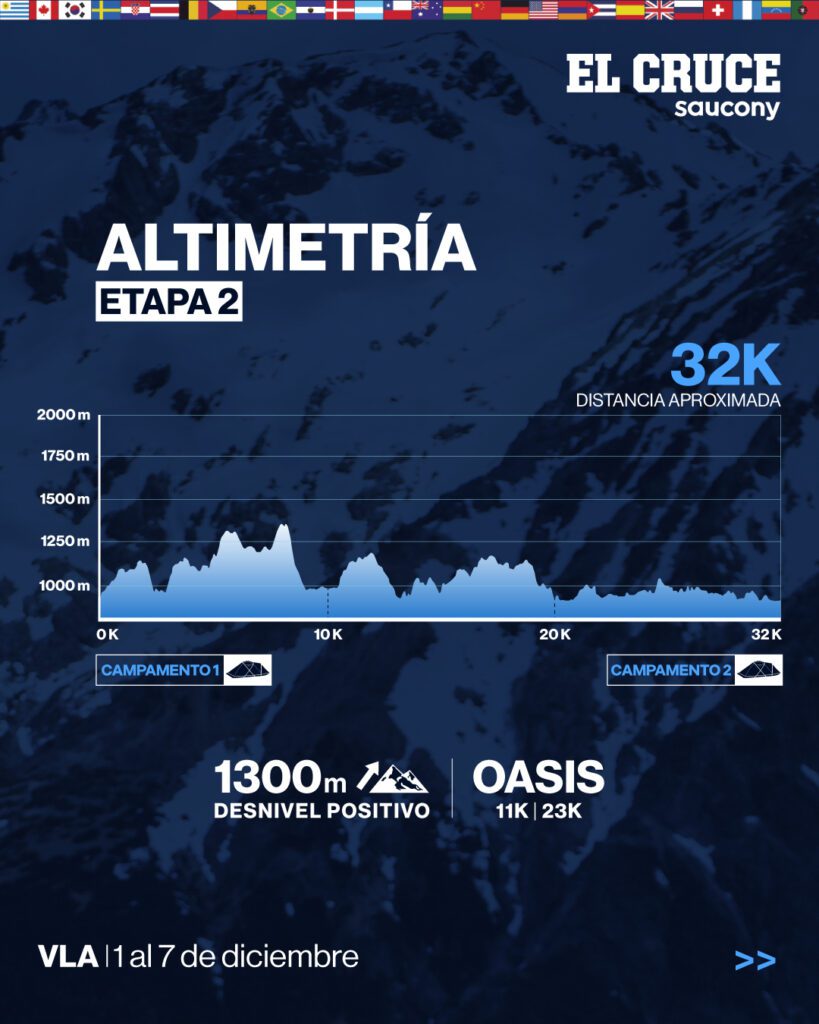
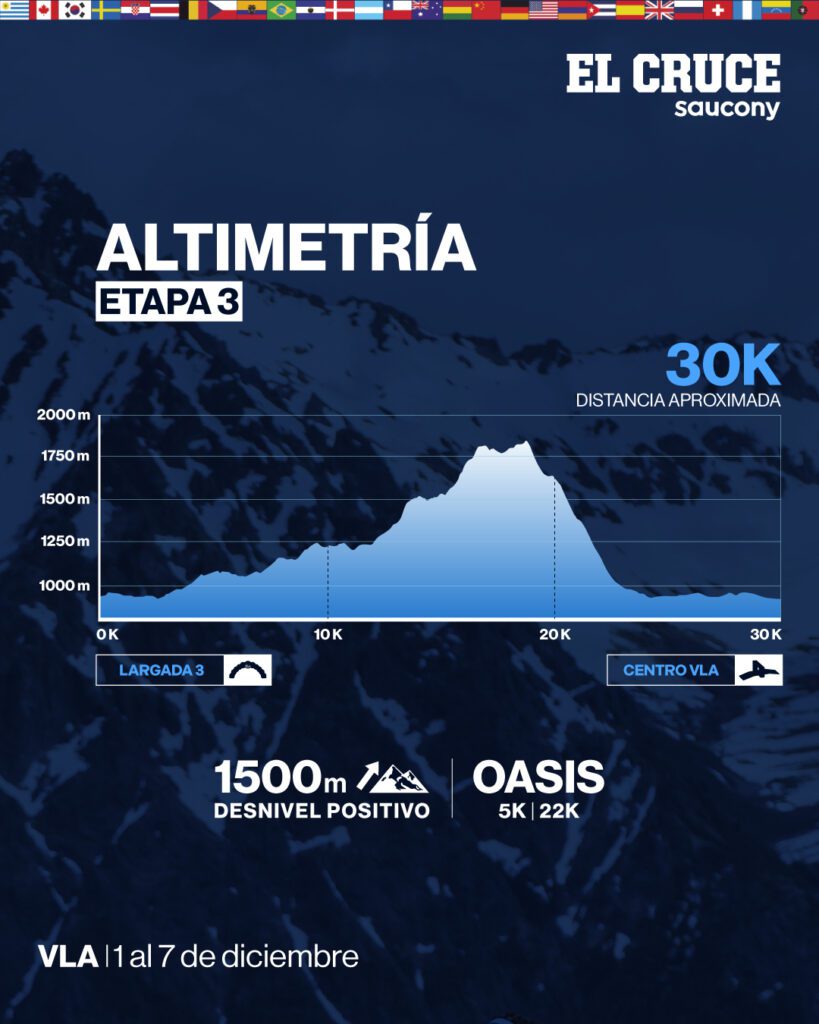
TIME LIMITS AND CUT-OFF POINTS
The Organization will set time limits to complete each stage, ensuring safety and orderly competition development. Based on these times, specific cut-off points will be defined, which will be final and mandatory..
Each stage will have a pre-established cut-off point, occurring after 70% of the stage. Additional cut-offs may be implemented based on the time limit and elevation gain.
For this edition, the time limit will be 15 minutes per kilometer, and the organization may extend this time in case of bad weather (previous rains, storms, mud, snow) or bottlenecks.
Runners reaching cut-off points after the established time will not be allowed to continue the stage. They must stop and may be transported by the organization to the Camp. This transport will incur a fee to avoid complaints about waiting times.
Those who do not reach the cut-off point on time will receive an alternative medal since the El Cruce 2025 medal will be exclusive to those who complete all 3 stages
Participants who fail to reach the cut-off point for any reason will be considered as withdrawn. (See more information in the following section)
If you believe you cannot meet this requirement, we suggest preparing for next year's edition or participating in La Etapa, which offers distances of 15 km and 33 km.
WITHDRAWALS
It is very important to arrive at the race in excellent physical condition and mentally prepared for the challenge over the 3 days.
Withdrawals during Stages:
Participants who, for any reason, do not reach the pre-established cut-off points or decide not to continue can withdraw at control points offering organizational transport or make their own way to Villa La Angostura (unless unable to do so).
Withdrawals at Camps:
Runners who decide not to start stage 2 or 3 must inform the Information Tent to be transported to Villa La Angostura.
For both withdrawal scenarios:
- The Organization will not have a vehicle available for immediate transport to Villa La Angostura, and there may be long waits.
- The runner's bag will be available from 7 p.m. at Cef7.
- Accommodation and food expenses will be the participant's responsibility.
- Withdrawn participants will NOT receive the El Cruce medal.
TRAINING
Participating in El Cruce is not an ordinary challenge; it requiresphysical, mental, and logistical preparation.The combination of three days of racing with camp life can cause fatigue, bad moods, and desires to quit if not adequately prepared.
We recommend joining specialized mountain race training groups,as they are equipped to help you prepare every detail of the competition. These groups provide the physical and mental conditioning to fully enjoy the experience..

De News Agosto
Training
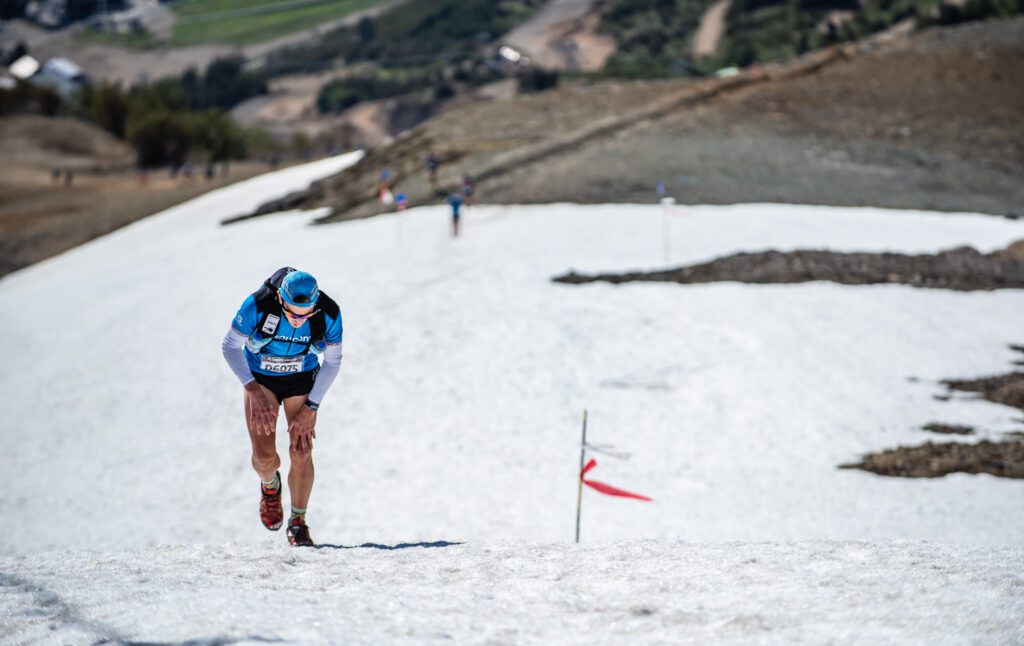
Train with commitment. Here are some tips:
1.- Train in groups – This is the best way to prepare for El Cruce. You’ll receive advice from those who have already run it, you’ll stay motivated, and you’ll feel supported over the months of preparation.
2.-Strengthen your muscles – Work at the gym or in specific strengthening classes, focusing especially on the muscles that support and complement the knees.
3.- Practice downhill running – Uphill is important, but downhills are often where you’re less prepared. Spend extra time training descents. Experience shows that most dropouts are due to downhill injuries.
4.- Train with your race gear – Wear the clothing, shoes, hydration pack, socks, hat, sunglasses, nutrition, and hydration products you’ll use during the race. This way, you’ll be used to them and avoid extra problems.
5.- Match your training to the challenge – If you only train 10K twice a week, El Cruce should not be your goal. Look for something that matches your training volume and commitment.
6.- Don’t think you can walk it – You’ll end up making excuses. El Cruce is for trained athletes; it’s not a leisure trek.
7.- Think long-term – You have several months to train; El Cruce should be in your daily thoughts now, not just in the last month.
8.- Camp experience – Have you ever slept in a tent? We don’t recommend your first camping experience to be at El Cruce.
9.- Wet feet training – Run for over an hour with wet shoes and socks at least once.
10.- Long runs – Do at least one long run a week.
11- El uso de bastones es altamente recomendado. Es fundamental acostumbrarse a los mismos durante los entramientos. Cada vez mas corredores de Elite los utilizan.
TRAIL RUNNING POLES
Although not mandatory, we recommend using poles,especially in stages 1 and 3 due to the technical terrain.
IMPORTANT:
Leaving poles at camps, aid stations, or along the route is prohibited.
The Organization is not responsible for lost or damaged items.
Practice using them during training to maximize their benefit.
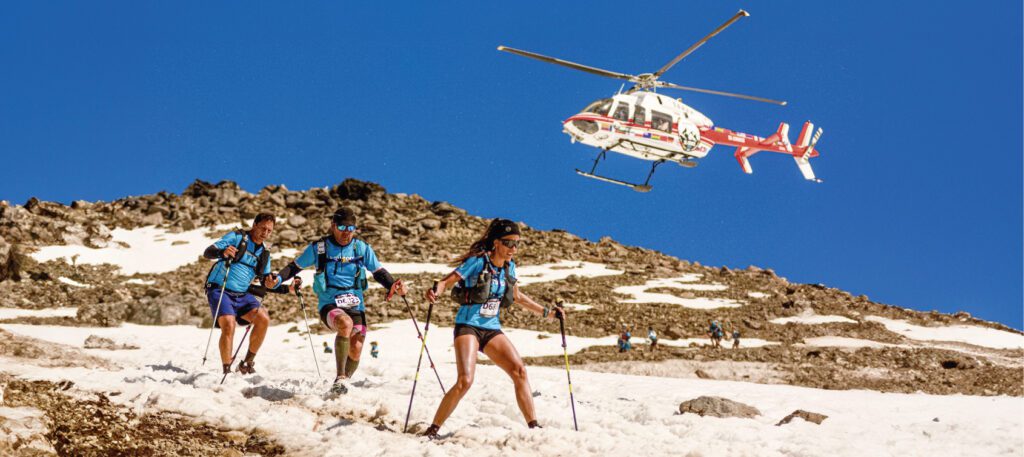
Oasis
- Fruits: Banana, Orange, Watermelon, and Melon
- Savory Snacks: Breadsticks, Peanuts, Chips, and Crackers
- Sweet Snacks: Chocolate-covered Peanuts, Candied Peanuts, and Cookies
- Quince Paste and Bread
- Cold Drinks: Water, Gatorade, Coca-Cola, and Fruit Juice
- Hot Drinks: Coffee and Soup
For environmental care and commitment, no cups or plastic bottles will be provided at aid stations. Please remember to bring the reusable cup included in your race kit.
Per Stage:
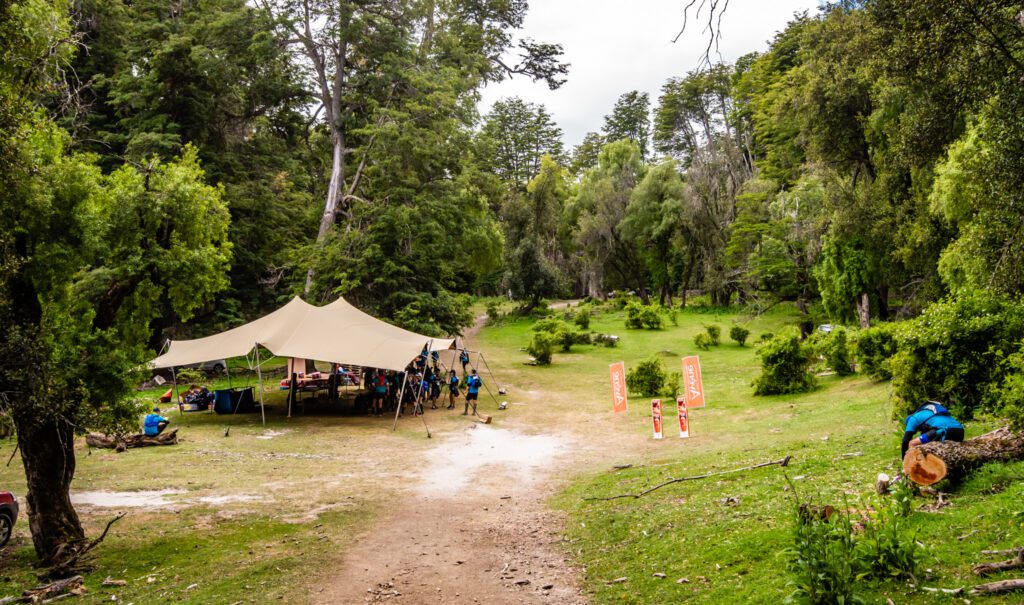
Stage 1
Oasis A: km 7
Oasis B: km 16
Oasis C: km 23
Stage 2
Oasis D: km 11
Oasis E: km 23
Stage 3
Oasis F: km 5
Oasis G: km 22
In case of route changes or Plan B, aid station locations may be modified.
CHECKPOINTS
Control Points (CP) are mandatory points that all competitors must pass through. Skipping a CP without correcting the mistake will result in immediate disqualification. Each CP will be manned by a member of the Organization or, in specific cases, marked with visible signs.
RACE TIMING
The total race time will be the sum of the three stage times. Each participant will receive a chip to attach to their shoelaces.
IMPORTANT
• Chips are on loan; loss or damage will incur a replacement fee of USD 10.
• Dead times (DT) will only be deducted in cases authorized by the Organization.
Final results will be available on the official El Cruce website.
SECURITY AND MEDICAL ASSISTANCE
Participant safety is a priority for the Organization. There will be a security team equipped for care and rescue, available to assist participants. Throughout the course, specialized mountain guides will ensure proper safety and care.
Participants will travel through areas often inaccessible by vehicles, reachable only by horses or, depending on weather and availability, helicopters.
The Organization will have a comprehensive team of doctors and health professionals (nurses, assistants, etc.), led by medical experts familiar with the routes and camps.
Additionally, specialized doctors will be available to answer participants' questions. In case a runner needs to be transferred to a medical facility, hospital, or clinic, expenses will be at their own cost. We strongly recommend always carrying your health insurance card.
There will be a comprehensive security deployment for this race, including:
- Expert mountain guides
- Rescue teams
- Interlinked radios for communication, bases, and repeaters
- Ambulances with medical personnel
- Head Medical Doctor
- Medical tent at the Organization's base
Each El Cruce participant is exclusively and conclusively responsible for their decision to participate in the event, releasing organizers and/or sponsors from any liability for hypothetical damages to themselves or their belongings during or in connection with the event.
Each participant is responsible for assuming all emergency medical expenses, except for the coverage provided during the race.
Participants must have their health insurance coverage in case of an accident. The coverage during the competition will not cover expenses after the person is transferred to a hospital.
The Organization may prevent a participant from continuing in the competition if advised by the medical staff. It can also make modifications to distances, routes, and schedules due to weather factors. Such decisions will not give rise to any claims against the Organization, sponsors, and/or medical staff.
Once the race is finished, no claims can be made regarding medical assistance to the Organization.
